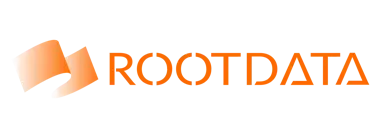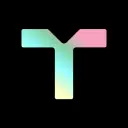zkEVM Ultimate Guide: Comprehensive Comparison of 6 zkEVM Solutions
Sep 19, 2024 07:01:45


Original Author: thirdweb
Original Compilation: BitalkNews
zkEVM is bringing Ethereum to the masses. But with so many options, which one is the best? We compared Polygon zkEVM (+ 2.0), zkSync Era, Linea, Scroll, and Taiko, and this is your ultimate guide to zkEVM.
A quick recap:
zkEVM is a Layer 2 network that processes transactions and sends proofs back to Ethereum. They use zero-knowledge proofs (ZK) and EVM compatibility to reduce the computational load on Ethereum (L1) and improve scalability without sacrificing security or decentralization.
However, not all zkEVMs are the same; there are different types of zkEVMs:
Vitalik has a great framework that showcases the pros and cons of each type, from Ethereum equivalent (Type 1) to EVM compatible (Type 4). The main trade-off is between EVM compatibility and performance:
So which zkEVM is the best? We compared several of the most popular solutions:
→ Polygon zkEVM (+ 2.0)
→ zkSync Era
→ Linea
→ Scroll
→ Taiko
Let’s break them down.
Polygon 2.0 (zkEVM Validium)
In June 2023, Polygon Labs proposed upgrading Polygon PoS to zkEVM validium.
Polygon PoS has a robust ecosystem:
→ 2B+ TVL (Total Value Locked)
→ Thousands of dApps
→ About 2.5 million transactions/day
Migrating PoS to zkEVM validium will retain its network effects and low fees without affecting its existing applications, users, and developer experience. But doesn’t Polygon already have a zkEVM?
Polygon believes that 2.0 (the zkEVM validium it proposed) is a lower-cost, higher-throughput version of its Polygon zkEVM Rollup.
Rollups leverage Ethereum to publish transaction data and verify proofs, inheriting its security and decentralization. But there are trade-offs:
The downside of Rollups is that publishing transaction data to Ethereum is costly and limits throughput. Validium offers similar security guarantees to Rollups (ZK proofs ensure the validity of transactions), but transaction data is provided off-chain.
Compared to Rollups, this gives Validiums two main advantages:
Lower fees, as they do not consume expensive Ethereum Gas (i.e., block space for storing transaction data)
Higher scalability, as Rollups' throughput is limited by the transaction data that can be published to Ethereum
The trade-off for Validium is that they must ensure the availability of transaction data outside of Ethereum, which can be challenging. However, Polygon PoS's existing 100+ validators can serve as a highly secure guarantee of data availability.
So why use Polygon zkEVM?
Polygon zkEVM
Polygon zkEVM is a Type 3 ZK-Rollup. Its goal is to be EVM equivalent—this means greater scalability when working with existing Ethereum tools and clients (by retaining EVM opcode compatibility).
Currently, Polygon PoS (2.0) and Polygon zkEVM rollup are two public networks in the Polygon ecosystem. This will remain the case after the upgrade: one as a rollup and the other as Validium.
But why not just phase out Polygon zkEVM?
Polygon 2.0 and Polygon zkEVM complement each other: Polygon zkEVM (Rollup) has slightly higher fees and lower throughput but offers the highest level of security. This is best suited for applications handling high-value transactions (e.g., DeFi).
On the other hand, Polygon 2.0 (zkEVM validium) will provide the highest scalability. This is best suited for applications with high transaction volumes and low fees (e.g., Web3 games, social).
The mainnet for Polygon zkEVM launched in March 2023, and the current TVL on the network is about $54 million. Built on Polygon zkEVM: https://thirdweb.com/polygon-zkevm
zkSync Era
zkSync Era is currently a Type 4 zkEVM, but over time, it may increase compatibility with EVM bytecode. Era (its mainnet) was built by Matter Labs and launched in March 2023, currently having a TVL of about $450 million, with 27 million transactions in the past month.
The goal of zkSync is not EVM equivalence but to improve proof generation speed through its custom virtual machine (VM). It natively supports Ethereum cryptographic primitives, simplifies testing for Hardhat plugins, and enhances user experience through native account abstraction.
zkSync Era uses its LLVM compiler to convert Solidity, Vyper, and Yul code into executable code on the zkSync VM and plans to support Rust and C++ in the future. It has a robust L1-L2 contract messaging system that helps developers pass data between contracts on Ethereum and zkSync.
The upcoming zkPorter integration in zkSync will offer users the following options:
High-security zkRollup accounts, with fees approximately 20 times lower than Ethereum
zkPorter accounts with stable transaction fees and different security models, allowing for flexible user experiences
For data availability, zkSync Era publishes state differences rather than transaction inputs—providing data compression and integration with zkPorter.
As the only Type 4 zkEVM on this list, its custom virtual machine enables certain features (and higher scalability) on zkSync Era.
For example: zkSync Era enhances the developer experience by natively supporting account abstraction through its custom virtual machine. However, EVM equivalent chains cannot natively support account abstraction; they implement it through Ethereum's ERC-4337.
The downside of Type 4 zkEVM is the lack of compatibility—requiring adjustments to the development process to build applications on zkSync Era. Build on zkSync Era: https://twitter.com/thirdweb/status/1666119985520066561
Linea
Built by ConsenSys (the creators of MetaMask, Truffle, and Infura), Linea is currently a Type 3 zkEVM. With native integration of MetaMask wallet and Truffle developer toolkit, its Alpha mainnet launched in July 2023 and has accumulated a TVL of $50 million.
What makes Linea unique is its ability to execute unchanged native bytecode according to Ethereum Virtual Machine specifications. Its goal is to provide a Type 2 zkEVM in the future, ensuring near-complete compatibility with Ethereum while maintaining scalability.
Linea does not use a transpiler or custom compiler. It directly uses the bytecode compiled from Solidity to generate ZK proofs for smart contracts, reducing the risk of errors and hacks. For users, this means Ethereum-like security with much lower transaction costs.
Build on Linea: https://thirdweb.com/linea
Scroll zkEVM
Scroll is a zk-Rollup on Ethereum and is currently a Type 3 zkEVM, planning to transition to Type 2.
Its long-term goal is to prioritize EVM compatibility and decentralization over rapid ZKP generation, thus moving towards a Type 1 zkEVM.
A successful Type 1 is the ultimate form of EVM compatibility, decentralization, and scalability—essentially replicating Ethereum L1. But as we see from Ethereum itself, achieving this is much more challenging.
Currently, Scroll's alpha testnet is a Type 3 zkEVM and is open to the public. Build on Scroll: https://thirdweb.com/scroll-alpha-testnet
Taiko
Similar to Scroll, Taiko is a generalized zk-Rollup aiming to become a Type 1 native zkEVM. Taiko takes a different approach than Scroll to become Type 1, prioritizing decentralization over speed from the start:
Scroll is gradually enhancing EVM compatibility (starting from a Type 3 testnet) and making its sequencer and prover more decentralized at mainnet launch. Although ZKP generation is slower, Taiko has decentralized these components from the beginning and maximized EVM compatibility.
Taiko's Type 1 testnet is currently available. Build on Taiko: https://thirdweb.com/taiko-grimsvotn-l2
Using Vitalik's framework: → Taiko: Type 1 (testnet live) → Polygon zkEVM: Type 3 (mainnet live + plans to migrate to Type 2) → Linea: Type 3 (mainnet live + plans to migrate to Type 2) → Scroll: Type 3 (testnet live + plans to transition to Type 1) → zkSync Era: Type 4 (mainnet live)
In summary, L2 development and adoption are key to Ethereum's future + solving blockchain scalability issues. Each zkEVM has unique advantages and faces unique challenges, but they all play a crucial role in achieving an accessible web3 ecosystem.

Related Projects
Latest News
Sep 30, 2025 18:33:06
Sep 30, 2025 18:32:06
Sep 30, 2025 18:31:44
Sep 30, 2025 18:20:45
Sep 30, 2025 18:14:51
















